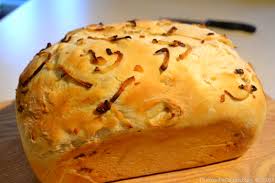“It’s called shabdkosh in Hindi. What a pretty name!” announces my friend, reading out from a website she’s checking out.
We are in a shop with interesting and unfamiliar products and there’s something called “seabuckthorn juice”. We live next to the sea but haven’t ever heard of this and we’re googling to figure out whether it’s called something else in any of the languages we are familiar with.
There are three of us and the other two stare at her in disbelief… for a few moments before erupting in laughter! She has hit on a Hindi to English dictionary (shabdkosh!!) looking for a translation of seabuckthorn and is reading out the title under the impression that that is the word she is looking for!
Even funnier because all this is in India and the English poses no problem – only the Hindi bits! Most jokes about language tend to be centred around translating stuff from any Indian language into English (like this classic translation of a Mulk Raj Anand line “there is something black in the lentil soup” for daal mein kuch kaala hai meaning “something fishy is afoot”!! )
But translating from English to Hindi – like my pal did above or from one Indian language to another can be just as hilarious. Or trying to speak in an unfamiliar tongue. Like this gem from my uncle, who had just shifted to Hyderabad from his native Bangalore. He tells our man Friday (those were the days when such a species still existed!) to run to the shop and buy him two goats for ten paise! (Shop ki poyi padi paisalaku rendu mekalu theesukuraa, he explains.
Our man Friday is a villager. He scratches his head… yes, things were cheaper back then but two goats? For ten paise? (For comparison, ten paise would buy you one small square inch chikki (peanut brittle)!
Two goats, even one, is a tall order! Dorakadu, saar (you won’t get it, sir), he finally answers.
“I only need to hang my shaving mirror on the wall,” he protests! How much does it cost to get a nail?
Aha moment and the mystery is cleared up. My Kannada speaking uncle has used the Telugu word for goat (meka) instead of the word for nail (meku) – just one little vowel sound but we could have ended up celebrating Eid on the wrong day! Goat biryani, that is – if anyone was up to slaughtering a goat!
Being a vegetarian, however, we’d probably have had something involving no slaughter… maybe just some translation, like the village milkman, when asked by a visiting American to explain what “curd” was, scratches his head and explains, “Milk sleep in the night, early morning tight!!”
Like this very simple, almost forgotten “tiffin” item called…
MOR KALI
- Rice flour – 1 cup
- Sour buttermilk – 3 cups (1 cup yogurt whisked with 2 cups water)
- Oil – 2 tbsp (preferably sesame oil)
- Mustard seeds – 1/2 tsp
- Mor milagai/majjiga mirapakaayalu/green chilies soaked in buttermilk and sun dried – 3-4 (substitute with red chilies if you can’t get these)
- Urad dal -1 tsp
- Asafoetida – 1 large pinch
- Curry leaves – 2 sprigs
Whisk the rice flour, buttermilk and salt together.
Heat the oil in a apn and fry the mor milagai for a few seconds till crisp. Take out, cool and crush with the fingers.
In the same oil, pop the mustard seeds, add urad dal, curry leaves and asafoetida.
Lower heat, add back the fried mor milagai and pour in the buttermilk mixture, stirring constantly.
Cook for 7-8 minutes till it forma a ball around the ladle. Take a little between your fingers and press. It shouldn’t be too sticky.
Spread it on to a greased plate and cool.
Cut into pieces with a knife or if you want it to look exciting, with a cookie cutter!
Serve plain or with coconut chutney.
Who cares what it’s called in any language anyway – food is a universal lingo!






